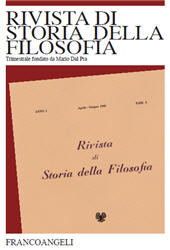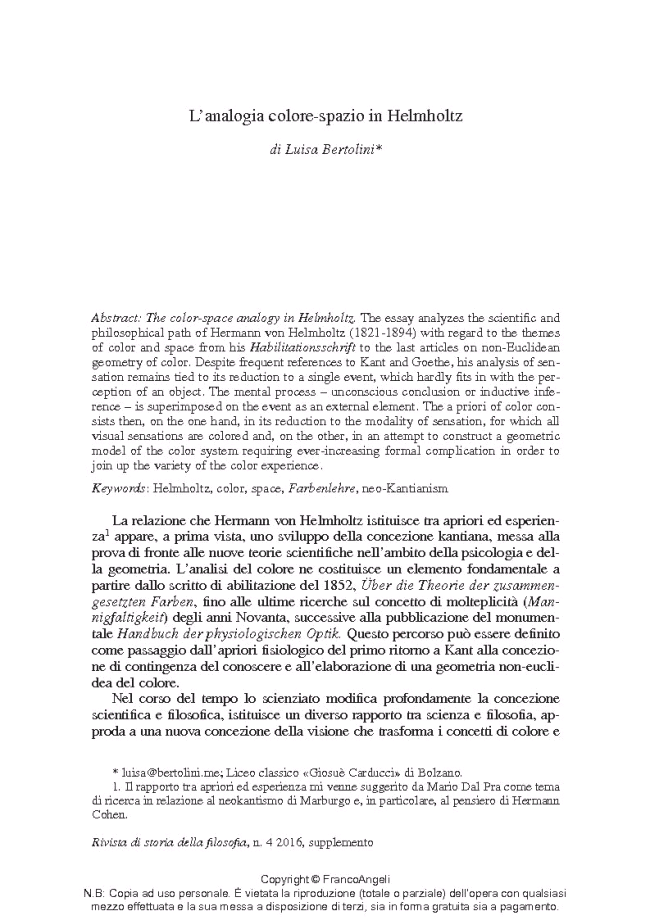L'analogia colore-spazio in Helmholtz
263-274 p.
The essay analyzes the scientific and philosophical path of Hermann von Helmholtz (1821-1894) with regard to the themes of color and space from his Habilitationsschrift to the last articles on non-Euclidean geometry of color. Despite frequent references to Kant and Goethe, his analysis of sensation remains tied to its reduction to a single event, which hardly fits in with the perception of an object. The mental process - unconscious conclusion or inductive inference - is superimposed on the event as an external element. The a priori of color consists then, on the one hand, in its reduction to the modality of sensation, for which all visual sensations are colored and, on the other, in an attempt to construct a geometric model of the color system requiring ever-increasing formal complication in order to join up the variety of the color experience. [Publisher's Text].
-
Artikel aus derselben Ausgabe (einzeln erhältlich)
-
Informationen
ISSN: 1972-5558
KEYWORDS
- Helmholtz, color, space, Farbenlehre, neo-Kantianism



